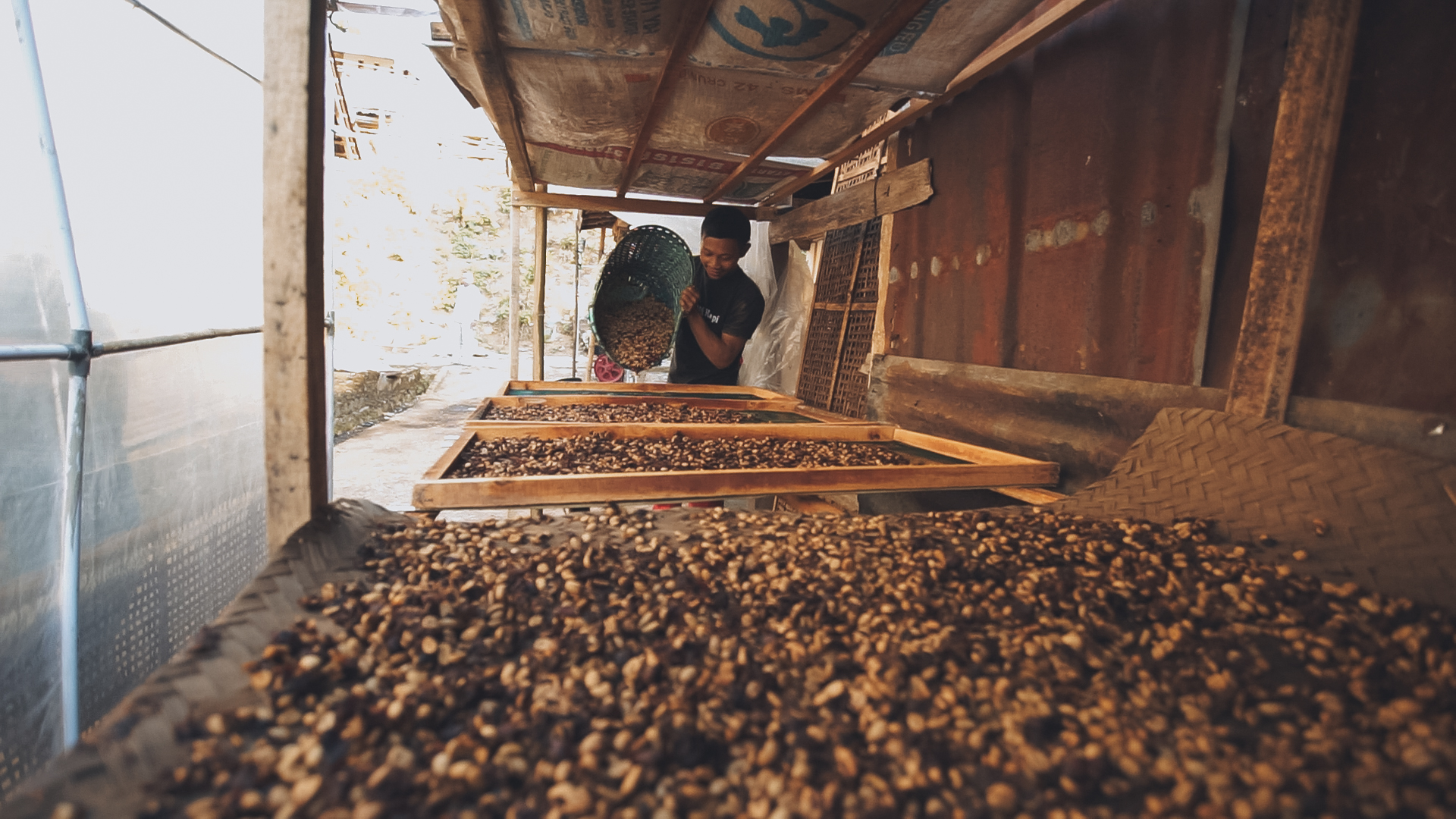
The Unique Method of Temanggung Farmers
Dutch people introduce coffee trees in Indonesia. They planted around Batavia’s territory in the late 16th century. After that, they spread out the seeds through the West Java region the 17th and 18th. That is why, geographically and climatologically, Indonesia is very suitable for coffee plantations, because it has a climate that is suitable for coffee growth and production.
According to Indonesia Investment data, Indonesia’s coffee plantations have a total area of approximately 1.24 million hectares, 933 hectares of robusta plantations and 307 hectares of arabica plantations. Indonesian coffee has a unique taste, which is why many world coffee connoisseurs want to enjoy this coffee. Sumatra coffee has shipped coffee beans to various countries in Germany, Hong Kong, the Netherlands, Switzerland, Arabia and Kuwait.
Indonesian coffee export statistics January – June 2021
| Beans | Jan | Feb | Mar | Apr | May | June |
| Robusta/Arabika per ton | 603,783 | 635,467 | 646,410 | 433,220 | 482,612 | 700,863 |
In January, coffee export statistics increased, but declined in April and increased sharply in June. That means that coffee lovers in the world are increasing because coffee has become a primary need. Then, what about the current level of coffee consumption in Indonesia?
Indonesian coffee consumption
Consumption data for 2018/19 reached 4.3 million sacks, this was due to strong consumer demand for fresh, soluble, and ready-to-drink (RTD) roasted products. Consumption for 2019/20 will probably reach 4.9 million bags due to high consumer demand. Indonesia’s booming coffee-drinking lifestyle continues to expand in urban areas. Currently, many categorize coffee consumption as the third wave of coffee. The third wave of coffee is a time when people think that coffee is not just a thirst quencher and an energy booster. But also a drink that must always be there and even become a daily necessity.
According to the Center for Agricultural Data and Information Systems, the Ministry of Agriculture, in 2016-2021 Indonesia’s coffee consumption is likely to increase by 8.22%/year. In 2021, coffee stocks are likely to reach 795 thousand tons with consumption of 370 thousand tons. Thus, there is a surplus of 425 thousand tons, which means that every year there is an increase. They enjoy coffee at home and in coffee shops.
Coffee production in Indonesia 94.5% comes from smallholder coffee entrepreneurs and 81.87% of national coffee production is robusta coffee originating from coffee centers in South Sumatra, Lampung, Bengkulu, East Java, and Central Java. Then, what is the process that coffee farmers do to get quality coffee beans?
Post-harvest method

Farmers in order to produce quality coffee beans must go through a process. After picking, the farmers sort the coffee cherries from the damaged coffee beans. Then, do post-harvest processing. The technique used during post-harvest will affect the quality of the coffee beans.
Full-Washed Method
In this process, farmers usually put coffee beans in water, then if the beans float it means the beans are of poor quality or defects. The coffee flavor character has a more clean, light, less fruity character, the body tends to be lighter and the acidity level is higher.
Semi-Washed Method
Semi-washed process carried out twice the drying process of coffee beans. After picking, farmers will peel the outer skin of the coffee beans using a depulper and then dry them in the sun. The coffee flavor characteristic produced in this method has a fuller body, lower acidity level compared to the previous process, and spicy taste.
Natural Method
Natural process is usually done by drying in the sun. In this process, the coffee beans must be turned over regularly, so that the coffee beans dry out to avoid mold or spoilage. The coffee flavor characteristic produced in this method has a low acidity, exotic taste and more body.
Pulped Natural Method
In this process, the coffee beans have a higher flavor consistency because they do not go through the fragmentation stage. The initial stages are similar to the full wash process. But the difference is after the coffee fruit is peeled (pulping) the fruit is directly dried in the sun without going through washing and fermentation first. That’s why the resulting coffee will be more tasteless. However, farmers rarely use this process.
The methods used by farmers during post-harvest are different, because they are adapted to conditions in the region. There is something interesting about the Temanggung coffee farmers, they use the ripe cherries harvesting method. What is the ripe cherries harvesting method?
Ripe cherries harvesting Method

Coffee beans are fruit seeds that are a type of cherry or berry. We divide the ripeness of the cherries into 3 levels: The unripe cherries are green. The color begins to change to yellow and gradually to a deep red almost purple color once the fruit is ripe (in most cultivars, there are some cultivars that are yellow and even orange when ripe) as the fruit becomes red it becomes very sweet and sweeter the ripper it gets.
Ripe cherries harvesting is a method used by Temanggung farmers to distinguish coffee beans that are processed naturally or dry. Natural process full red-cherry and dry process containing mixed cherries with 80-90% ripe cherries. Farmers should be selective when sorting cherries. Cherries are selected really ripe, this will increase the quantity of harvest. With good processing, this method will also produce premium coffee beans. This method is also become a key in maintaining coffee quality and increasing the price of cherries or green beans.
Coffee is very influential for economic growth in Indonesia, including Temanggung. Temanggung farmers increase the production of coffee beans using the ripe cherries method. Then, in order to increase the quality of the coffee beans, the Sumatra Coffee team provided training to coffee farmers, distributed coffee beans, and held a composting program to maintain coffee trees. With this activities, These activities are expected to make local coffee go global.



